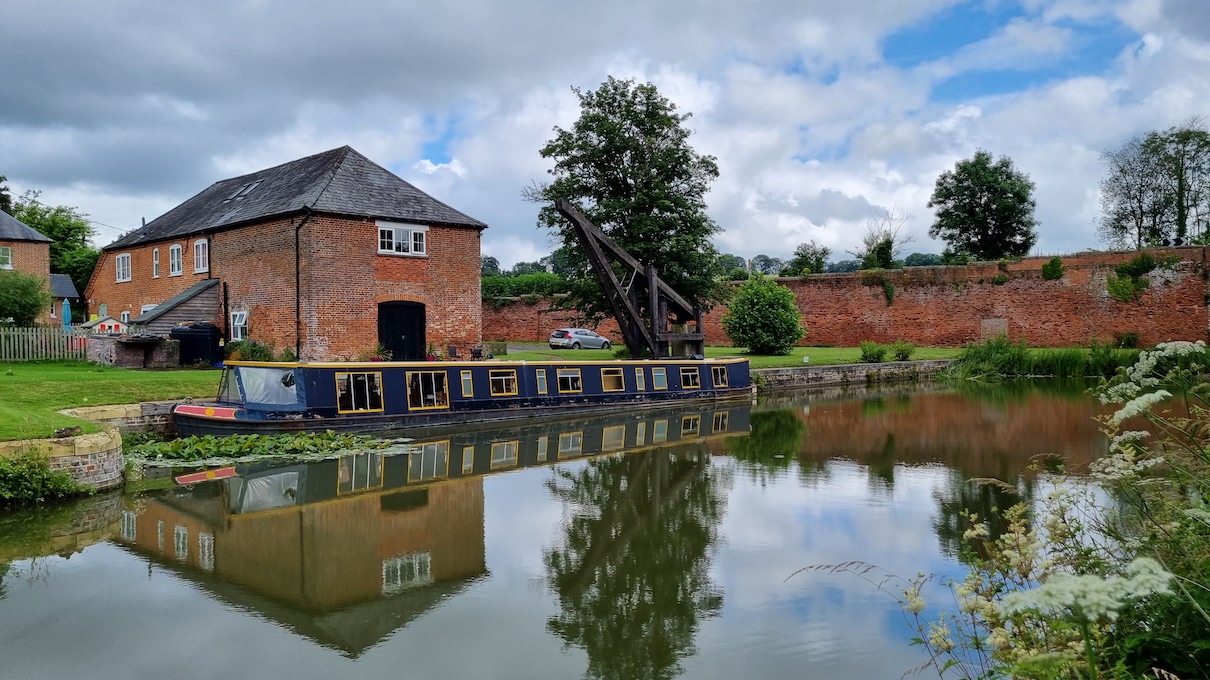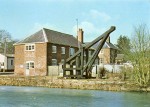
Burbage Wharf
Burbage Wharf on the Kennet & Avon Canal was constructed in 1831 to handle the fast growing trade involving the trans-shipment of timber, stone, agricultural products and bricks which were then made locally.
The magnificent crane at Burbage Wharf was restored originally in 1979 and again in 2012.
The following information was taken from a document held by Wilton Windmill from the Burbage Wharf Crane Restoration Group, in 1975:
In the year 1810, the Rivers Thames and Bristol Avon were linked by a new canal running from Bath to Reading. Twenty-one years after that, the then Earl of Ailesbury, owner of the great Forest of Savernake near Marlborough, decided to have a wharf built as near to his estates as possible, at Burbage on the Kennet & Avon Canal. The wharf and its buildings were built of Bath stone brought up the canal and of local bricks inscribed with an 'A' in his Lordship's honour. To handle the new trade in timber, stone, coal and farm products, a huge wooden crane was built on the wharf, carefully carved, turned and erected by expert craftsmen with a Savernake tree trunk two feet in diameter and sixteen feet high as the centre post on which rotated a jib over twenty feet long and fifteen feet high, balanced by two tons of stone blocks.
The Kennet & Avon Canal, largely disused since 1950, is now being restored and soon pleasure boats and others will be able to sail past Burbage Wharf from Reading to Devizes. The famous steam Beam Engine station at nearby Crofton has been restored to working order and the locks are being cleared out and rebuilt by enthusiastic volunteers.
In 1972, a small team of local industrial archaeologists, led by Don Cross of Shrewton, carried out a recording survey on the old crane on Burbage Wharf, the only survivor on our canals. It was found to be in a dangerous state of decay and the owners of the wharf, Her Majesty's Crown Estates Commissioners, agreed to its demolition. After careful measurements were completed, a huge Army mobile crane helped to dismantle the rotten 142 year old veteran.
But then began a project probably unique in constructional engineering. All the ironwork left on the old crane was saved - though much had been lost for scrap - and when the Crown Estates offered Mr Cross all the new timber needed to build a replica, the temptation was too great.
A small team of local folk with varied occupations, young and old, have now been working steadily since 1973, cutting and shaping the new timbers, using working drawings (prepared from the measurements made of the old one) by a young Oxford engineer, David Pearce, who travels every fortnight over one hundred miles to join the working parties. Very few pictures and no constructional details of the old crane exist so the project still lacks information on how and why some of the parts of the crane were built the way they were. The Army has provided very practical help, young local sub-aqua club members have dived in the canal looking for lost parts and several local firms have given valuable free help and advice.
But cutting mortices and tenons a foot long and six inches deep with hand tools only, sawing huge timbers fifteen feet long and weighing a ton has given the team many headaches as well as backache. Even digging out the masonry hole where now the new post stands was a major problem. However by next summer (1976) a new wooden Burbage Crane will, it is hoped, arise on the canalside - a working reminder of the busy commercial activities which once took place there and a unique effort in restoration.
So far all work involved has been voluntary and materials donated free or purchased by the team.
Download the Burbage Wharf self-guide

